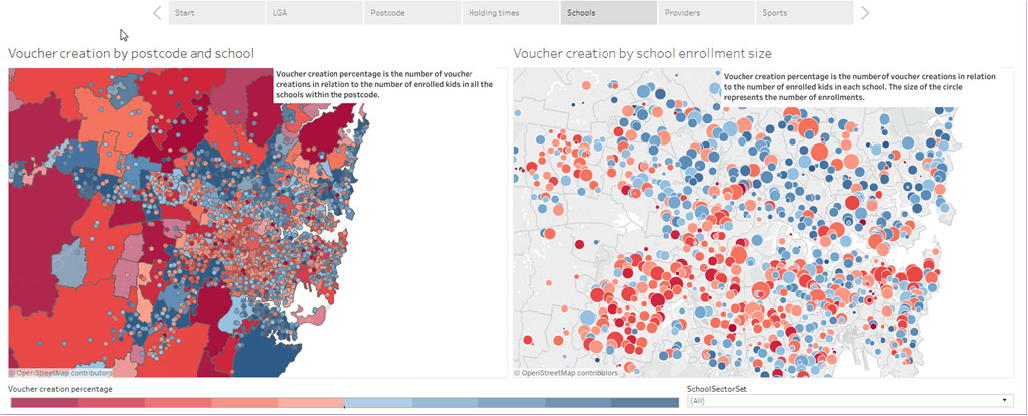NSW Office of Sport
The Active Kids initiative, launched in early 2018, allows parents, guardians and carers of school children to apply for a $100 voucher to use for sport and fitness costs.
The program’s overall objective is to increase children's’ participation in sport and active recreation, and to contribute to the Premier’s priority of reducing childhood obesity.
The Question 

The DAC was engaged to conduct data analysis to better understand voucher uptake and redemption against population and facilities data to improve voucher redemption rates and identify service gaps.
The DAC was given data collected in 2018 to finalise a ‘proof of concept’ (to show the feasibility of the solution) in March 2019.
Our Solution 
- Use of standardised school names in voucher applications to allow analysis of voucher claim quantity per school.
- Developed new indicators modelling student travel time and provider presence in local areas, to better understand the supply and demand for sport activities.
- Developed a visualisation package which provides a geo-spatial view of claim and redemption metrics, voucher take-up over time, performance of schools, etc.
- Developed a workflow process that helps to build actionable insights for further improvement of voucher take-up in local areas.

Impact
Better understanding of service gaps in local areas will help prioritisation of agency activities and discussion with key stakeholders to improve voucher uptake.
Increase operational efficiency by streamlining analytics through visualisation and workflow process.
The insights will be invaluable in responding to vulnerable communities and identifying service delivery gaps across the sector
NSW Office of Sport
What Next? 
The next step involves testing visualisation and workflow in a variety of local areas.
Afterwards begins the process of building workflow development on visualisation, which will allow further streamlining of the analytics operation.
Access a PDF version of our case study here.